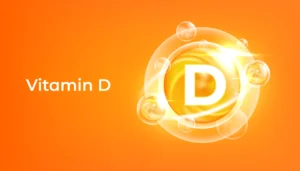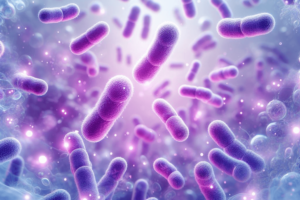What is colic pain?1
There’s a three-month period that many parents come to dread – their baby’s period of infant colic. Infant colic can be defined as excessive crying and fussiness for no apparent reason. It is a temporary phase, which can be distressing for the parents and the infant, but mainly for first time parents. Around 50% of crying infants fuss for over an hour a day, but a baby who keeps on crying for more than three hours a day, at least three days a week, and consistently for longer than three weeks can be considered to have colic.
How long does colic last?
Colic pain can typically start two to three weeks after birth and peak when the baby is between 4 to 6 weeks old. For most babies, colic can last up to three months, but in some cases, it can stretch on for up to nine months.
What causes colic?
- GI related: some of the reasons can be as follows:
- Lactose intolerance
- Different gut microflora: Treatment with lactobacilli may be helpful
- Underfeeding, infrequent burping, and overfeeding
- Psychosocial:
- Parental perception of crying- counseling groups have proven to help, including when and how to effectively respond to crying.
- Colicky crying can occur during the evening and may be an infant’s way to decompress. Some babies are more sensitive to the noises around them and get irritated more easily. These infants keep on crying, and can swallow a bunch of air, get uncomfortable, and cry more.
- Biological: Immature motor regulation is posited as an early form of migraine.
Colic patterns2
Along with fussiness and crying, there can be other signs that may form a colic “pattern”. When the baby displays one of the following symptoms, it may be useful to distinguish infant colic from need-based crying.
Following are the signs:
- Crying at particular times, often in the evening
- Fussiness between periods of crying
- Red face and tensed body while crying
- Crying, which can sound like screaming or an expression of pain
- Crying that stops once the gas is passed or after a bowel movement
Treatments3
- Dietary advice according to the type of feeding
- Bottle-fed infants: A first-line approach as it contain partially hydrolyzed whey proteins with prebiotic oligosaccharides that can be effective
- Breast fed infants: A well-monitored low-allergen maternal diet avoiding cow’s milk and dairy foods with an appropriate intake of vitamins and minerals may be suggested.
- Pharmacological treatments: Simethicone and anticholinergic agent: Cimetropium bromide
- Probiotics: patented probiotic strains Pediococcus pentosaceus and q Bifidobacterium longum
- Complementary and alternative therapies: Herbal supplements such as fennel, chamomile, and lemon balm
Best Probiotic Treatment
AB-Kolicare:4
A combination of the two patented probiotic strains, Bifidobacterium longum and Pediococcus pentosaceus. It represents a well-described and unique mechanism of action:
- Induction of anti-inflammatory molecules
- High inhibitory activity against enteropathogens
- Fast digestion of HMOs
AB-Kolicare demonstrated a gradual effect from the first day, both in reducing daily crying time and also in reducing the number of episodes each day.
Dosage form: Drops
Recommended dosage: 7 drops once a day
Clinical data: 5
- Study: Multicentric, randomized, double-blind, placebo- controlled trial
- Subjects: 90 colicky babies (Rome-iV) upto 3 months old.
- Dose: oral administration of Bifidobacterium longum and Pediococcus pentosaceus) mix (1 × 109 colony forming units)
- Observation:
- Reduction in crying time after 1 week
- Equally effective in bottle-fed babies
- 83% respond to treatment within 1 week
- Conclusion: Daily oral administration of Bifidobacterium longum and Pediococcus pentosaceus was an effective treatment for shortening crying time due to infantile colic and improving fecal consistency.
Product Features:6
- Practical and easy to use
- Clinically proven and safe to use
- Naturally- sourced
Patient benefits:
- Reduces colic pain
- Reduces the frequency of crying and duration of colic pain
- Facilitates the development of healthy microflora in babies
References:
- Sarasu JM, Narang M, Shah D. Infantile Colic: An Update. Indian Pediatr. 2018 Nov 15;55(11):979-987. Epub 2018 Jun 13. PMID: 29941700.
- Indrio F, Dargenio VN, Giordano P, Francavilla R. Preventing and Treating Colic. Adv Exp Med Biol. 2019;1125:49-56. doi: 10.1007/5584_2018_315. PMID: 30656551.
- https://ijponline.biomedcentral.com/articles/10.1186/1824-7288-40-53
- https://www.ab-biotics.com/ab-kolicare-probiotic-babies/
- Chen K, Liu C, Li H, Lei Y, Zeng C, Xu S, Li J, Savino F. Infantile Colic Treated With Bifidobacterium longum CECT7894 and Pediococcus pentosaceus CECT8330: A Randomized, Double-Blind, Placebo-Controlled Trial. Front Pediatr. 2021 Sep 10;9:635176. doi: 10.3389/fped.2021.635176. PMID: 34568236; PMCID: PMC8461252.
- https://www.happiestbaby.com/blogs/baby/colic-q-a







